The signs of springtime in the Keweenaw are undeniable - despite the lingering snow piles that haven’t quite gotten the hint. The breezes feel ever so slightly warmer, the sun peeks out for a larger piece of the day, and we start to hear the return of the birds filling the cool dawn air with their songs.
While the Keweenaw Peninsula is home to many winged residents year-round, Spring is one of the best times of the year to see migrating birds on their epic journeys returning back to their summer homes. Canada Geese and Sandhill Cranes will noisily announce their arrival, while the Robins, Goldfinches, and Swallows fill the air with their lovely melodies. If you’re lucky, you might even see a Pelican stop for respite from its travels from the Gulf of Mexico.
For novice and seasoned birders alike, this is a prime season to do one of our favorite hobbies. We’ve built this guide and talked to some local experts to help you on your journey. Don’t forget to tally your Keweenaw Mountain Lodge Birding Checklist along the way!
Slow Down and Enjoy the Birds
Temperatures in spring are ideal for enjoying a delightful day in the Keweenaw. The air is clear, cool, and refreshing. Wear layered clothing, as it is chilly in the morning and warmer in the sun during the afternoon, and don’t be surprised if you end up with a little mud on your boots.
We’ve rounded up our favorite areas to go bird watching on the peninsula. This scenic drive has several easy-to-access turnouts that allow for scanning Lake Superior, inland lakes, and streams for songbirds, raptors, and waterfowl.
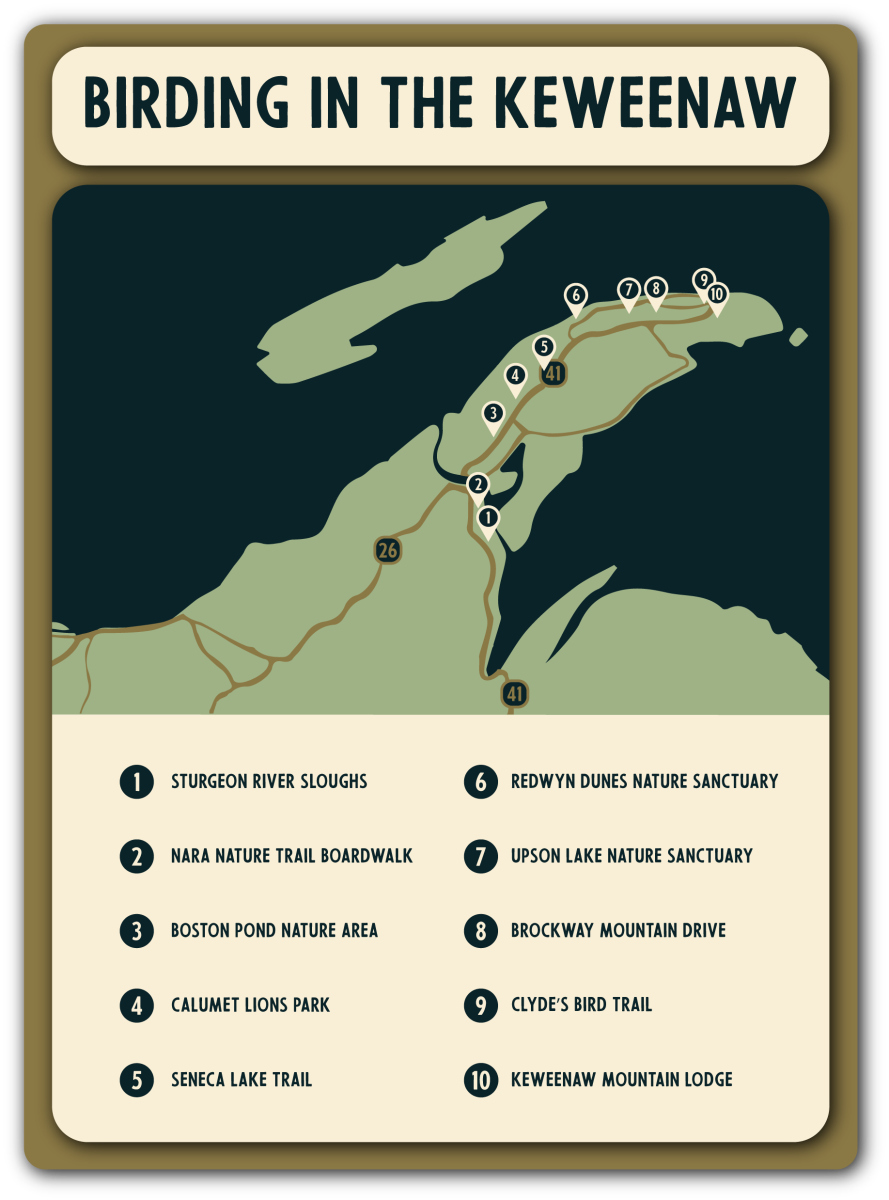
Use this map to plan your next Keweenaw birding adventure.
1. Sturgeon River Sloughs Wildlife Area
First on our list is a wetland area sandwiched between the Sturgeon River and Portage River, offering a pavilion and observing platform overlooking the marsh. The snowmelt in the spring often floods the area making it a perfect place for spring migrating waterfowl to stop. Here you may see Teal, Wood Ducks, and Northern Pintails dabbling through the sloughs.
2. Nara Nature Trail Boardwalk
With boardwalks stretching out over both banks at the opening of Pilgrim River into the Portage Canal, this boardwalk offers a perfect viewing area to walk out into the marsh; easy access to the marsh is unique without needing a boat. You may spot Woodcock, Bufflehead, Eastern Phoebe, Red-Winged Blackbird, and Great Blue Heron. Across US-41, the Nara Nature Trails System connects with the Michigan Tech Trails, a great place to spot various Warblers.
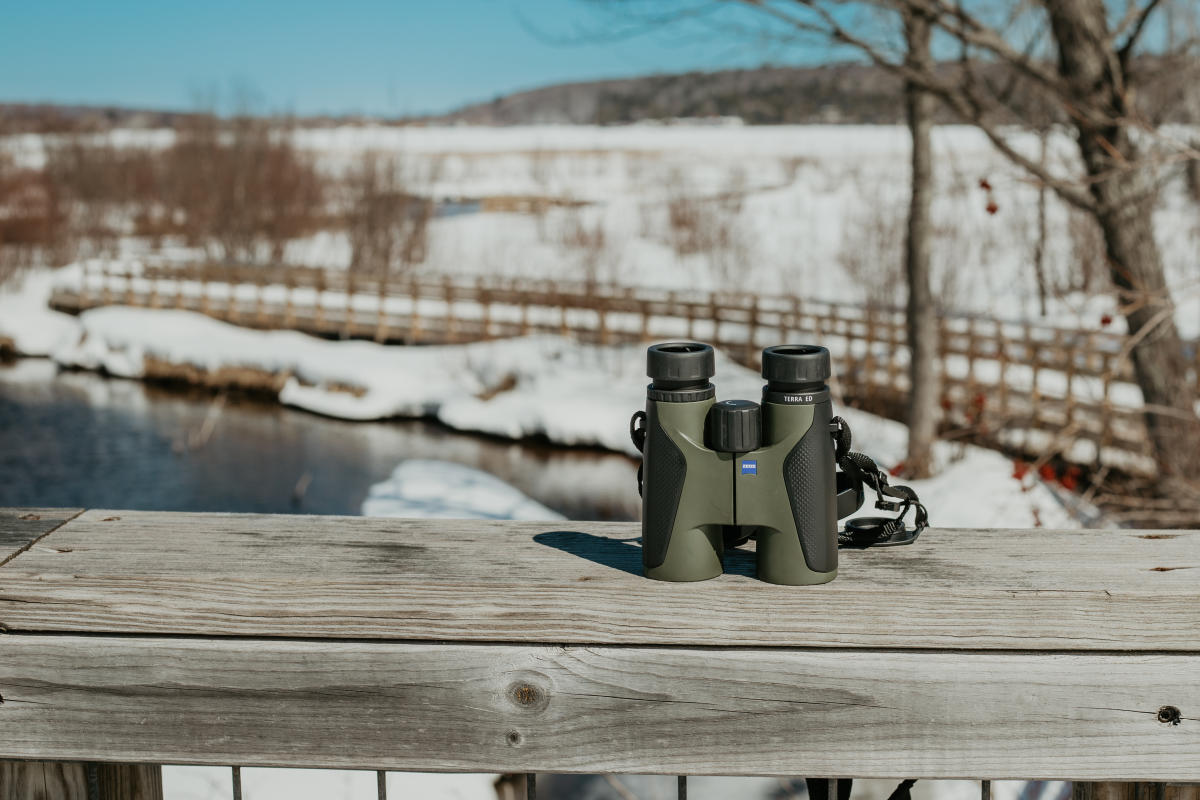
The Nara Nature Trail Boardwalk makes it easy to explore both sides of the Pilgrim River.
3. Boston Pond Nature Area
Located right off US-41 between Hancock and Calumet, the Keweenaw Land Trust has protected the Boston Pond Nature Area, offering both wooded areas and a small dock jutting out into the picturesque pond, making it perfect for seeing both songbirds and waterfowl. These might include the expected early migrants: Fox Sparrow, Golden-crowned Kinglet, Winter Wrens, and Yellow-bellied Sapsucker.
4. Calumet Lions Park
Located on Calumet Lake, this park features picnic tables and a barrier-free gravel walking trail around the lake. The walking trail takes you through tall birch trees and squat shrubs, making perfect conditions to see Northern Flicker, Warbling Vireo, Baltimore Oriole, and Indigo Bunting.
5. Seneca Lake Trail
Seneca Lake offers a small picnic area and a wooded dirt trail that circles the lake. This is a great place to see shorebirds like Spotted Sandpipers, and waterfowl like Ring-Necked Ducks, Common Goldeneye, American Coots, and the Common Loon. If you’re lucky, you may even spot the rare Green Heron.
6. Redwyn Dunes Nature Sanctuary
This wooded nature sanctuary located right on M-26 along Lake Superior offers a one-mile trail passing interdunal ponds, offering a great mix of woods and marsh. Look for an MNA trailhead on the east side of M-26 along Great Sand Bay. Here you may see Wood Thrush, Eastern Towhee, Northern Parula, and maybe a Belted Kingfisher patrolling its territory.
Note: If you’re using a birding app for identification, like Merlin Bird ID, this is the last spot you will likely have cell service. You can get service again at the top of Brockway Mountain, or at the Keweenaw Mountain Lodge.
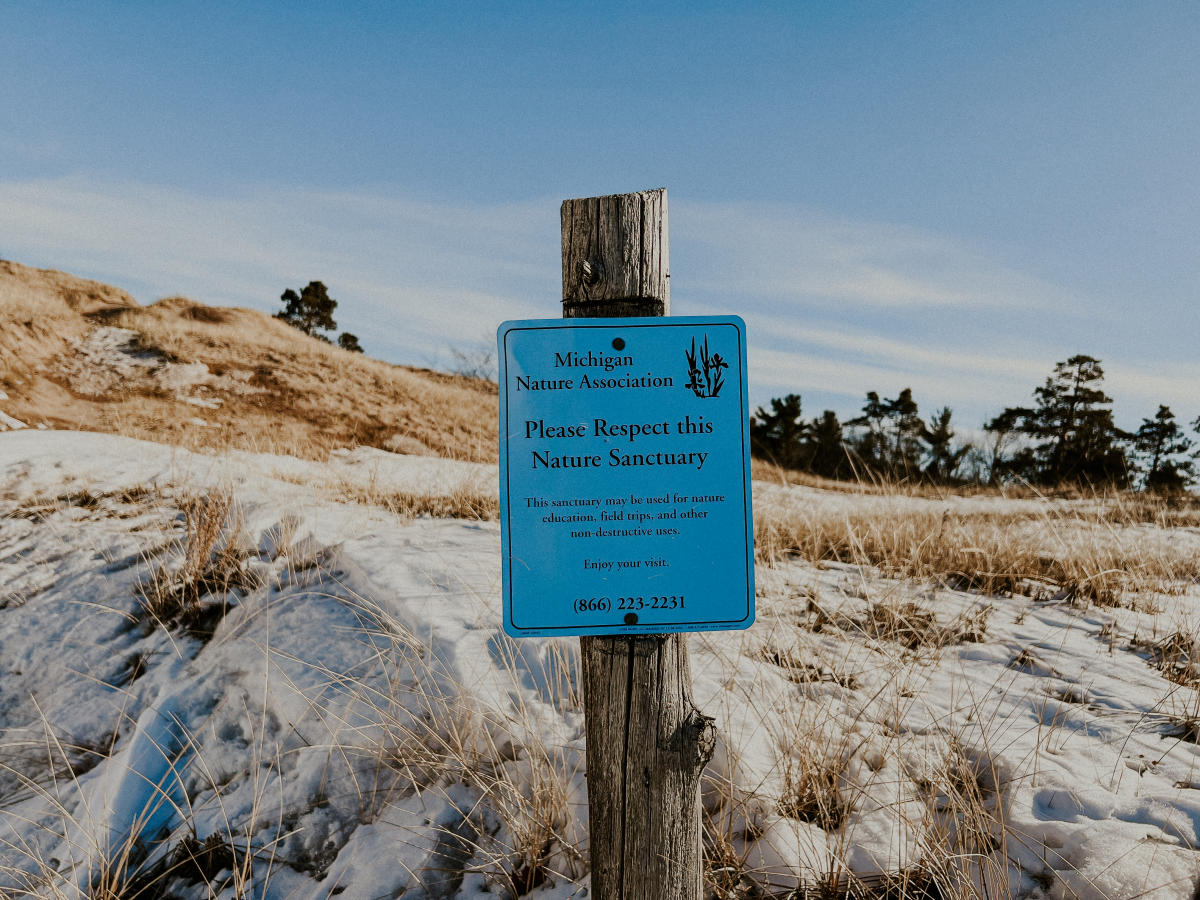
The Redwyn Dunes Nature Sanctuary offers a great mix of woods and marsh bird habitat.
7. Upson Lake Nature Sanctuary
The Upson Lake Nature Sanctuary includes a portion of Upson Lake, mature forests, and a section of Upson Creek making a perfect environment for various waterfowl. Other birds to watch for here include the Broad-Winged Hawk, Scarlet Tanager, Evening Grosbeak, Swainson’s Thrush, and Palm, Pine, or Canada Warblers.
Note: The road to get to Upson is a seasonal road and is not accessible until mid-to-late spring

The road to get to Upson Lake Nature Sanctuary and Brockway Mountain Drive are seasonal roads.
8. Brockway Mountain Drive
Known as “Hawk Highway”, Brockway Mountain is a great place for spotting raptors migrating in the spring. According to Copper Country Audubon, the spring raptor counts have recorded up to 25,000 raptors passing along its ridge between March 15 and June 15. Many even fly at eye level! Alongside various types of Hawks, you might spot Peregrine Falcon, Osprey, Merlin, American Kestrel, and Bald Eagle soaring above.
Note: the road to get to the top of Brockway Mountain is a seasonal road and is not accessible until mid-to-late spring
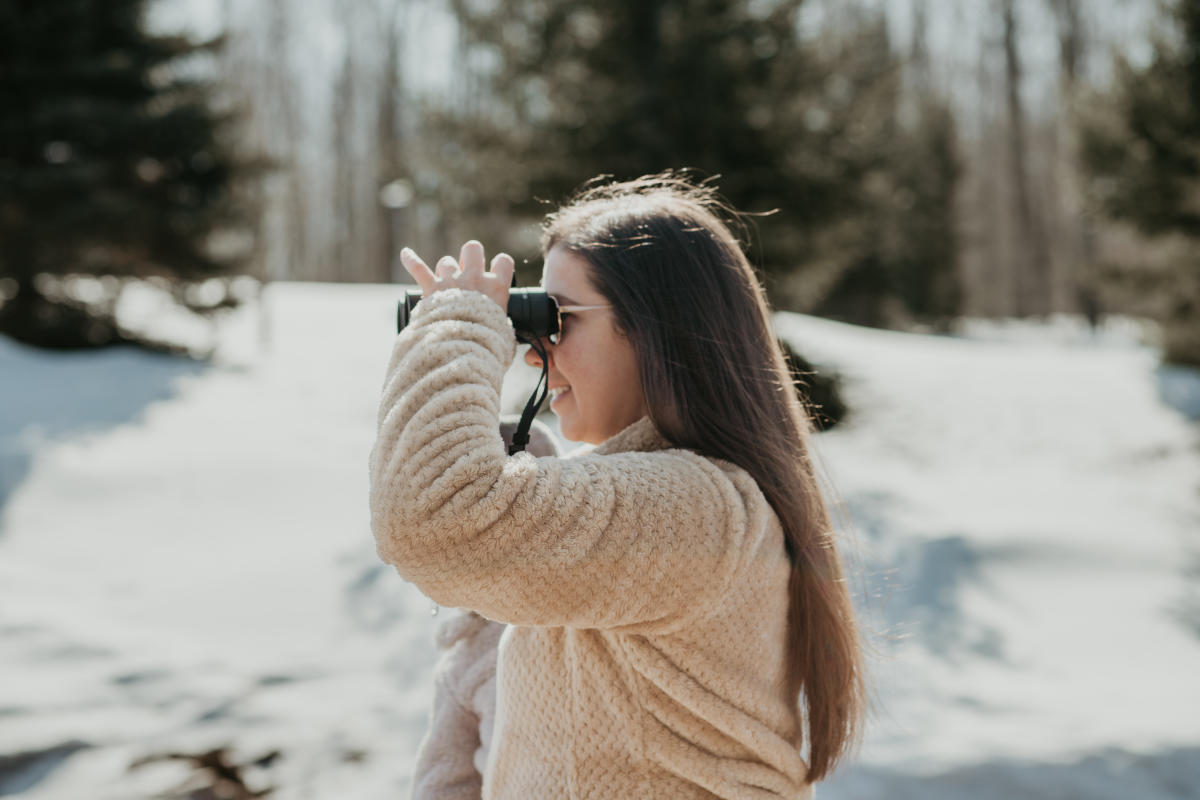 Brockway Mountain Drive is an excellent spot to view raptors soaring at eye level.
Brockway Mountain Drive is an excellent spot to view raptors soaring at eye level.
9. Clyde’s Bird Trail
Near the Copper Harbor Trail System, Clyde’s Bird Trail in the Ft. Wilkins Gardens is one of the few accessible meadow-like areas around. With a small pond nearby you may see many different Sparrows, Swallows, and Common Snipe, while Flycatchers and Warblers can be found along the woods’ edge. It is also a good spot for Kingfishers and various Woodpeckers like Pileated, Hairy, or Downy. Springtime is the best time of year for Birding in Copper Harbor as it offers the most diverse species of birds.
10. Keweenaw Mountain Lodge
Rounding up your Keweenaw Birding Tour, the Keweenaw Mountain Lodge is a great place to refuel for dinner and sit back to complete your Birding Checklist; this checklist includes some of 300 species seen within a 5-mile radius of the Keweenaw Mountain Lodge. Not far from the Lodge along Burma Rd is Estivant Pines Nature Sanctuary, one of the few old-growth forests left in Michigan and a great place to spot Winter Wrens during spring migration.
Exploring the forested trails surrounding the Keweenaw Mountain Lodge is a great way to wrap up your day birding in the Keweenaw.

Explore the forested trails around Keweenaw Mountain Lodge to complete your Birding Checklist.
Insider Tips From from Expert Birders
An avid local birder, Gil Lewis, shares, “One of my favorite places to go birding is the Michigan Tech Trails which can be accessed near the Humane Society off of Route 41, east of Houghton. The trails are free if you have a pass, or you can deposit money at the parking area.” He adds, “In May, I particularly look forward to the Warbler explosion. Many Warblers can be seen very close to the parking areas.”
Lewis continues, “Another area of interest, the Nara Trails, at the ends of the two wooden paths, there is great viewing of water birds in the spring.” He adds an expert tip, “Bring a spotting scope.”
If birding gear is what you seek, a great place to stop for binoculars or other outdoor gear is Surplus Outlet in Downtown Houghton.
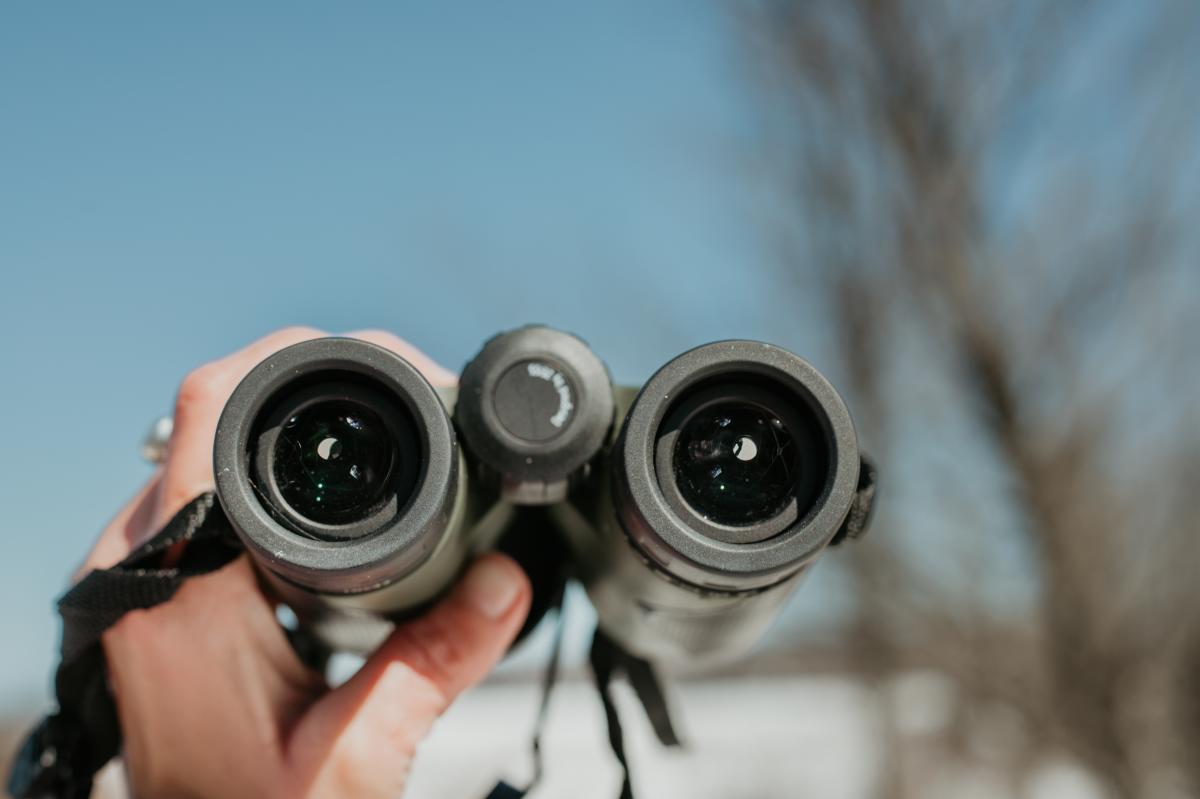
A good pair of binoculars is essential for spotting high-flying migratory birds.
We heard from another avid birder and ornithologist at Michigan Technological University, Dr. David Flaspohler about his experience birding during spring migration in the Keweenaw, “The Keweenaw has fantastic habitat and migratory bird diversity in April, May and early June each year.”
Dr. Flaspohler continues, “Some of my favorite places are along Sturgeon River Sloughs in Chassell where snowmelt can temporarily flood farm fields and pasture creating great habitat for dabbling ducks like Teal and Northern Pintails, and also shorebirds like Greater and Lesser Yellowlegs, Wilson's Phalarope, Spotted and Solitary Sandpipers as well as hundreds of Sandhill Cranes and regular Trumpeter Swans.”
 The Sturgeon River Sloughs is a great spot to look for sandhill cranes. | Photo by Tom Oliver - @theupwell
The Sturgeon River Sloughs is a great spot to look for sandhill cranes. | Photo by Tom Oliver - @theupwell
He adds, “The Nara Nature Trails in Houghton include a winding boardwalk through wetlands where the Pilgrim River flows into the Portage Canal. Warblers, Vireos, Ducks, Waders, Great Blue Herons and even American White Pelicans can be seen as well as 3-4 species of Terns and Bonaparte's Gulls in May.”
Continue reading more from Professor Flaspohler on his recent blog titled Bird Watching - Quality of Life.
Fostering our Feathered Friends
Even if it’s just for a small moment in time, there is something about birds that makes us lift our eyes away from our lives and up to the skies. An important way to foster the diverse species of birds in the Keweenaw is to recreate responsibly by staying on marked trails, respecting wildlife, and leaving the forest how you found it for our birds and insects to continue to find food and pollinate.
If you’re feeling inspired by the birds you saw on your tour, you can show off your checklist with a Birds of the Keweenaw print made by local artist Chris Schmidt at Studio 13 in Downtown Houghton. $15 of each print sold is given to Keweenaw Wild Bird R.E.C. (Rehabilitation, Education, Conservation) for continued support of our feathered friends.
Learn more about birding in the Keweenaw here!
Interested in updates, travel tips and quirky information about the Keweenaw? Just sign up for the Keweenaw Explorer, our monthly e-newsletter. Complete the form…

